When I started teaching costume construction at Toi Whakaari: the New Zealand Drama School last year, I decided I should do some of the projects that the costuming students do as part of their coursework, so I knew how the garments were taught and constructed in the course. It was also a good way to familiarise myself with ‘my’ industrial machine.
Every costume shop has its own ‘house rules’, and, while there are general method groupings, there are literally an infinite number of ways to make any specific costume item.
Every year the first year costumers build a theatrical version of a historical style from the foundations out: boned undergarment, petticoat and skirt supports, dress, accessories, hat. Last year the theme was 1780s, this year the students are doing 1570s Elizabethan.
I chose to make the 1760s stays the students make some years, as they have elements common to a lot of the different eras of boned bodices.
Since we’re teaching costuming for stage & film, not historical costuming, they are machine sewn and use modern materials.
And…it still took me a year to finish them.
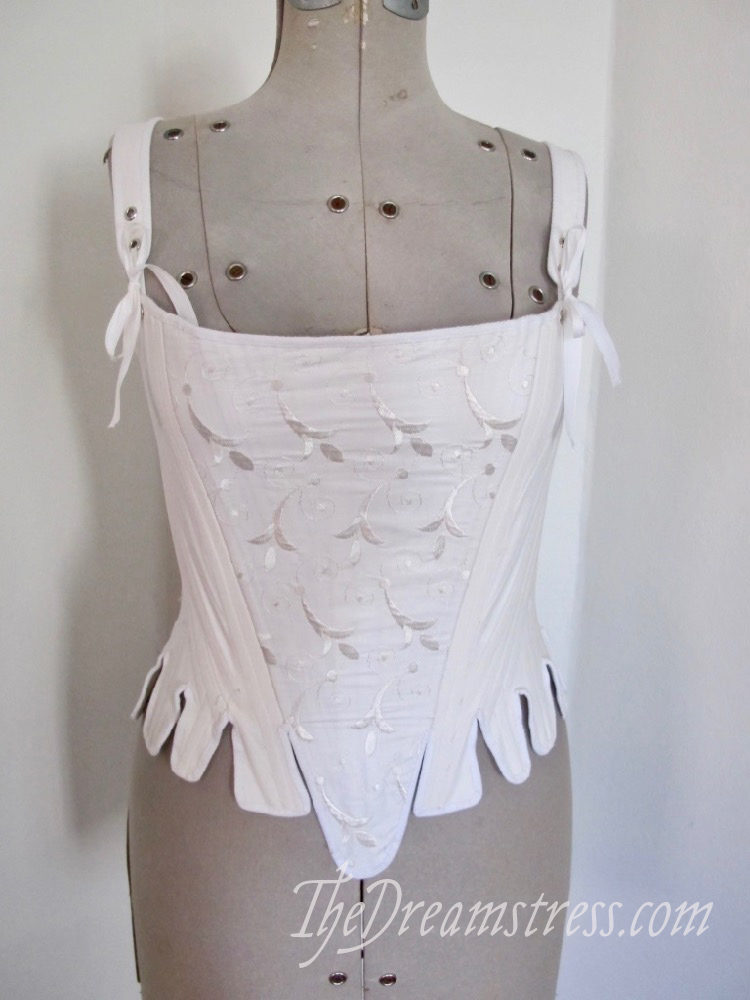
Basically I just got stuck getting the fit right, and faffed about with that for 11 months…
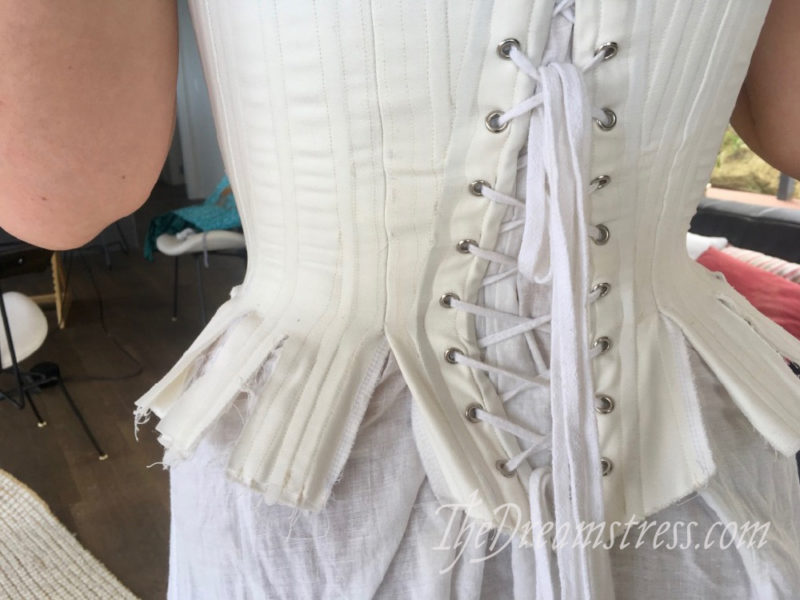
Pictured: Fitssues.
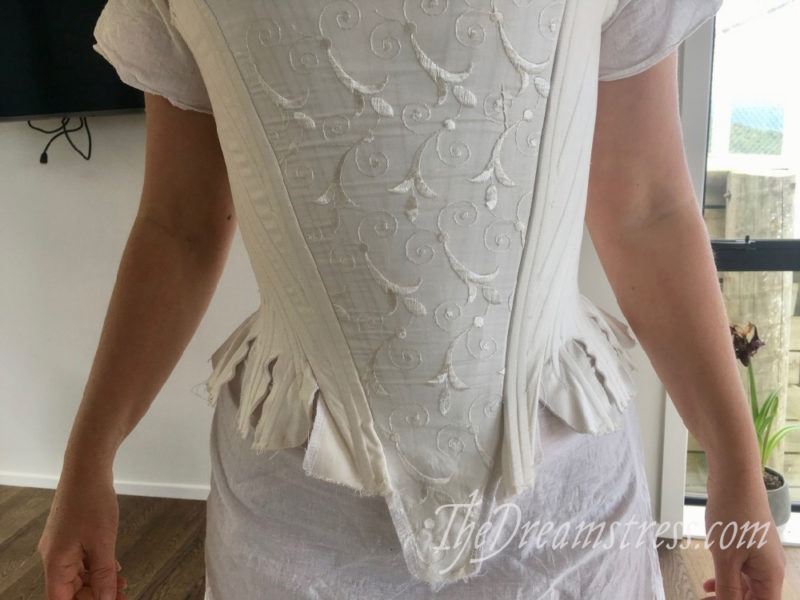
But they are (finally) done!

They are made from two layers of cotton duck (midweight twill weave), with a decorative layer of vintage embroidered cotton (from my grandmother) at centre front.
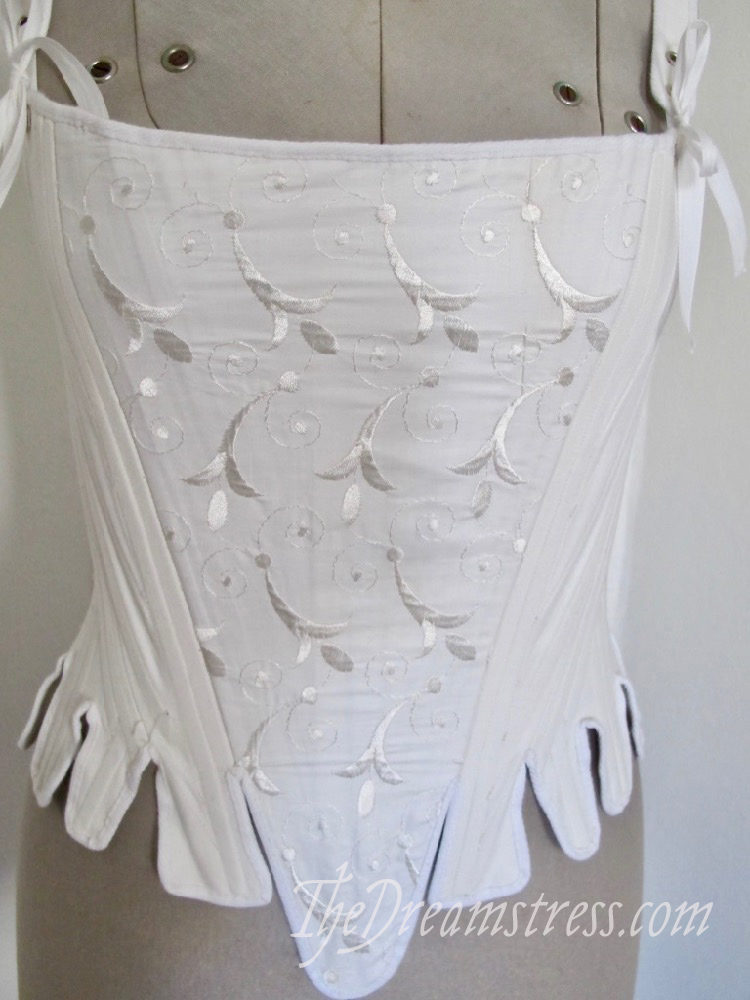
They are boned with German plastic whalebone.

All the boning channels and seam stitching were done on an industrial machine.
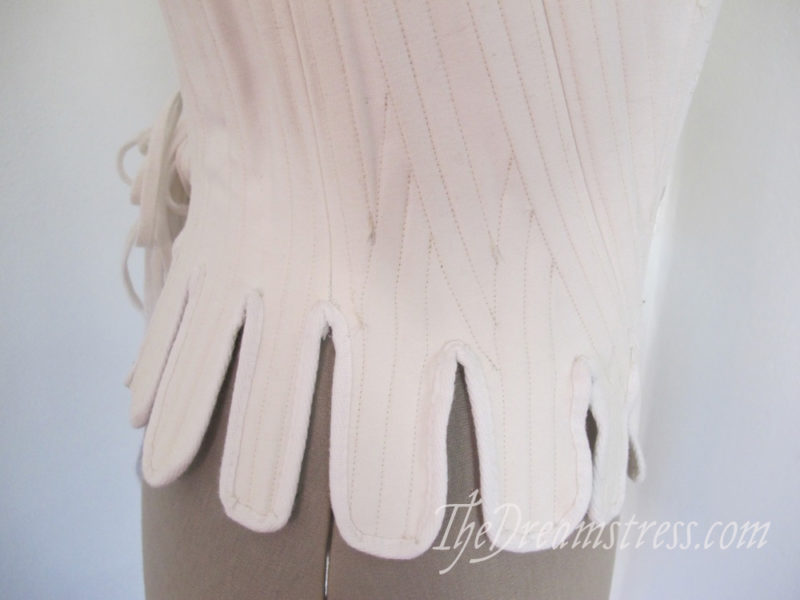
They have metal grommets, and use X cross lacing, instead of spiral lacing (I’m not going to lie, this part really stresses me!).
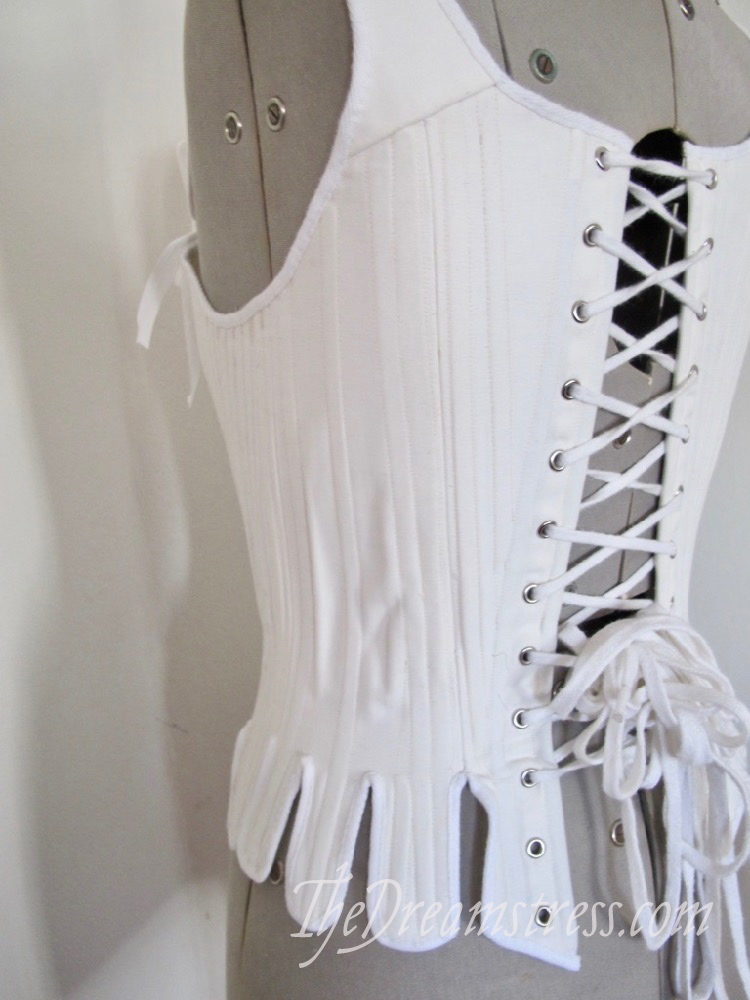
They are bound with cotton twill tape.
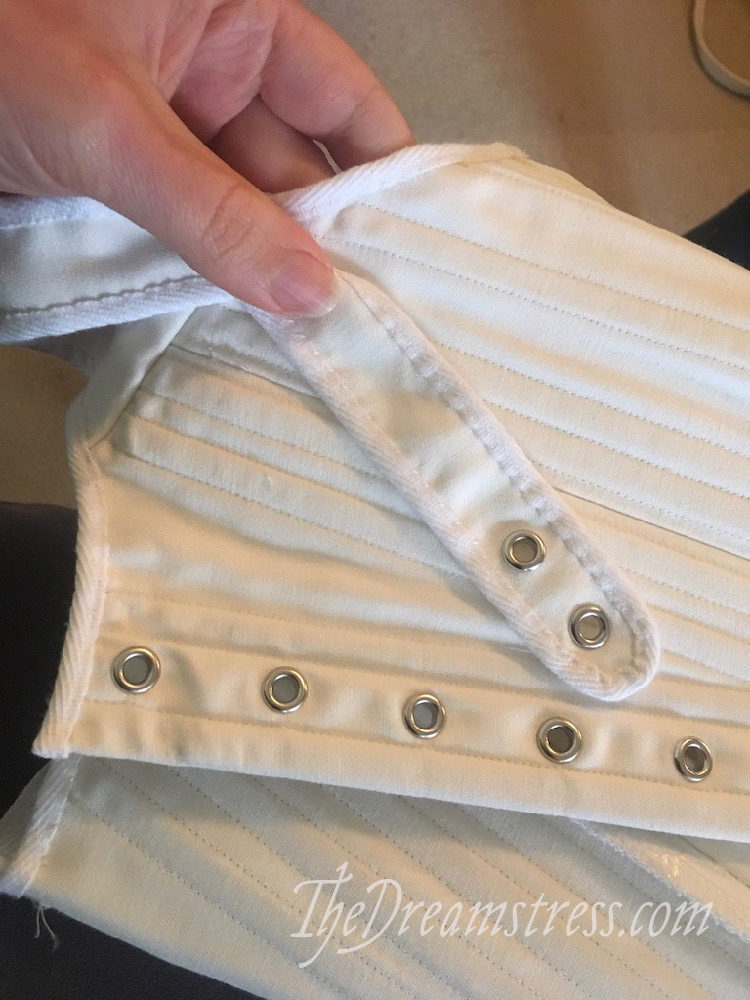
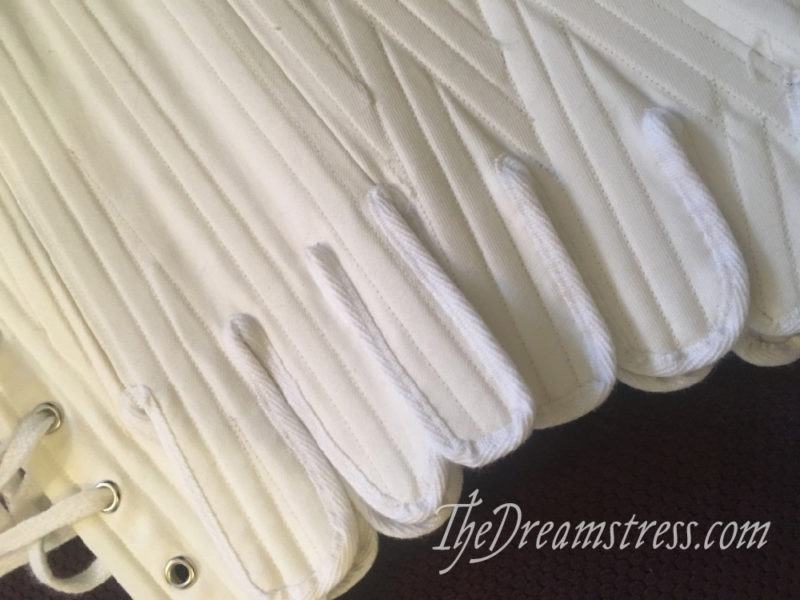
While the body of the stays were machine sewn, I did the binding by hand, because I enjoy hand sewing, the students do theirs by hand, and I did much of the binding while on the road and away from sewing machines at the annual Toi Whakaari trip to Manutuke Marae.
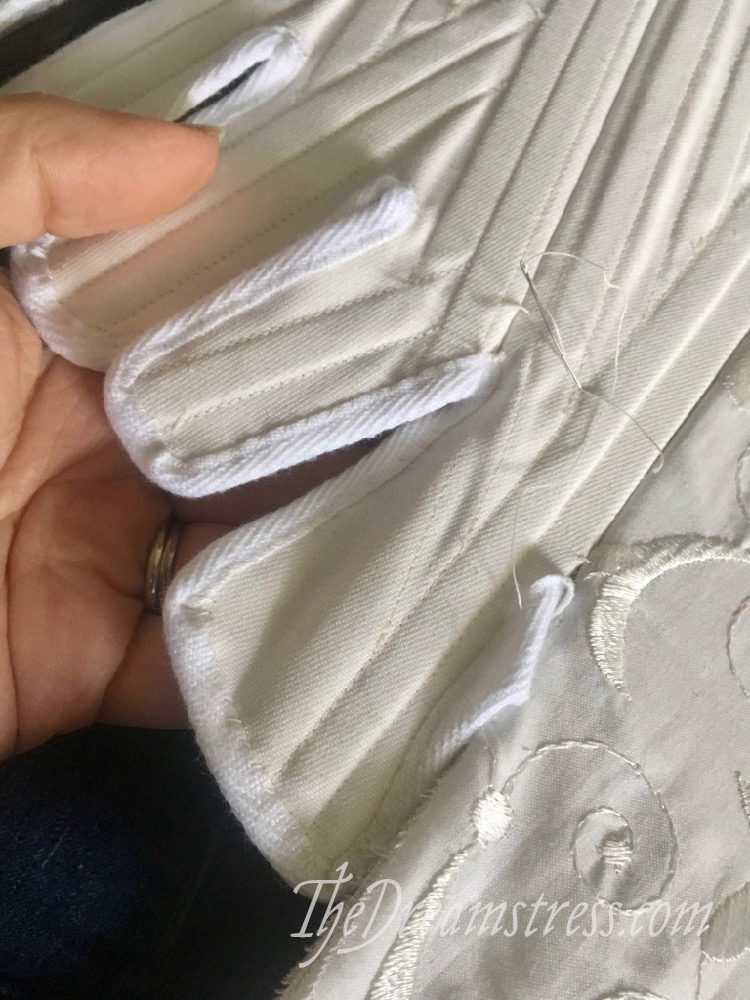
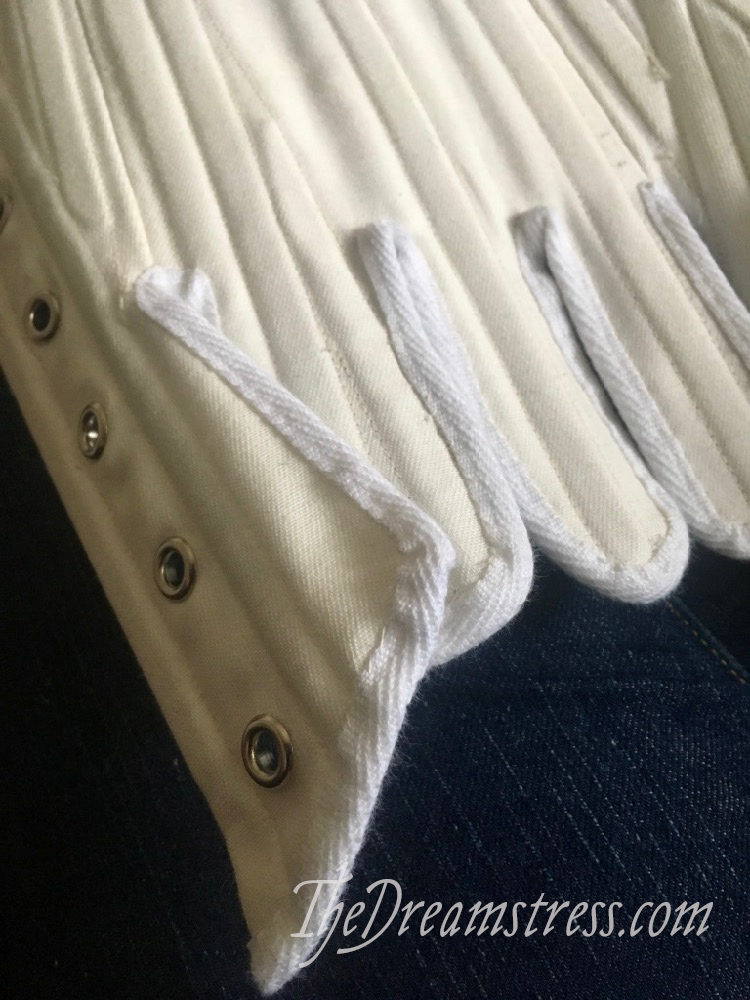
I also did reinforced the top of each tab with hand-sewing, rather than by machine.
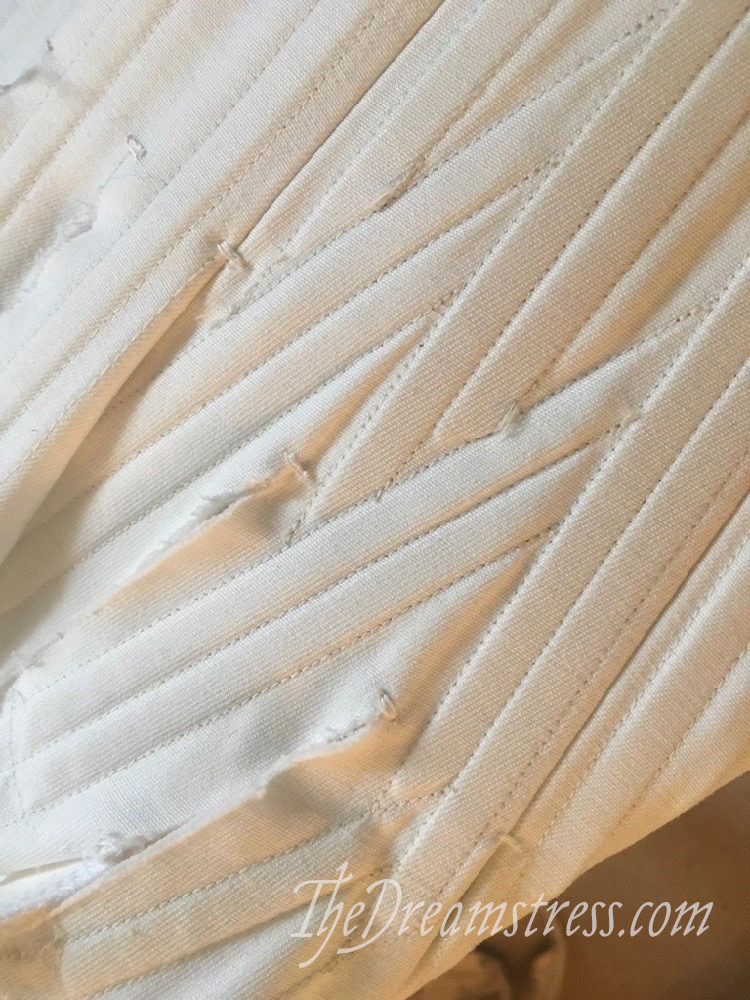
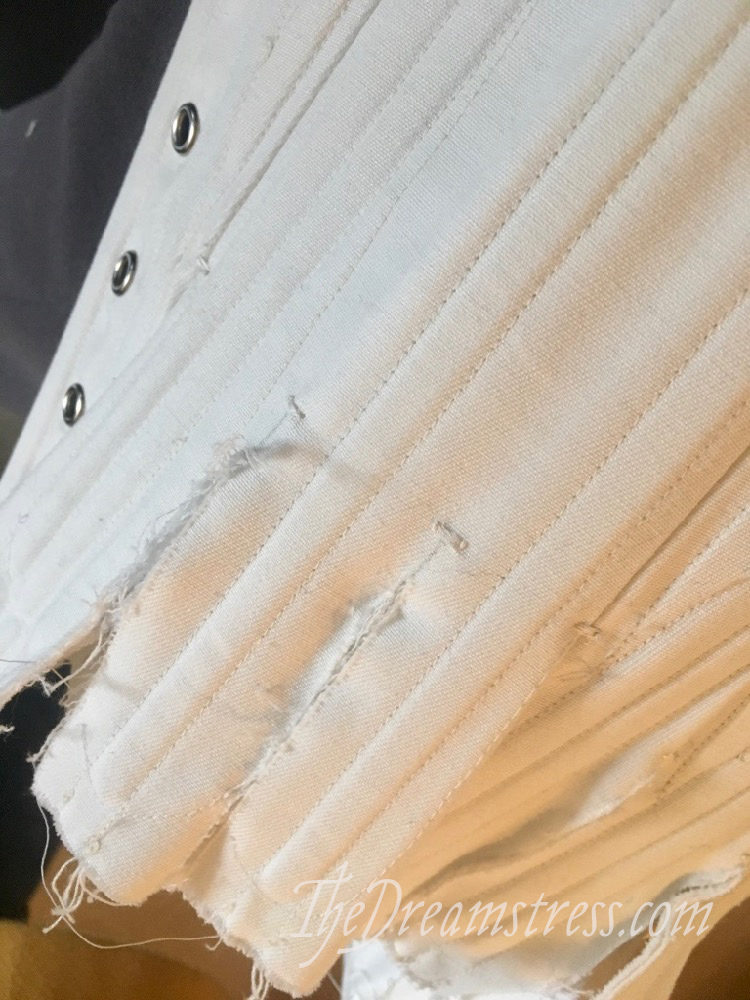
The binding only took me a couple of days of concerted sewing. And then they were finally done!

I’ve got two more pairs of 18th century stays on my sewing schedule for this year: one totally handsewn and historically accurate, and one a combination of hand and machine sewing. And I’m DETERMINED that neither will take me more than two weeks!
None of this ‘year’ nonsense…
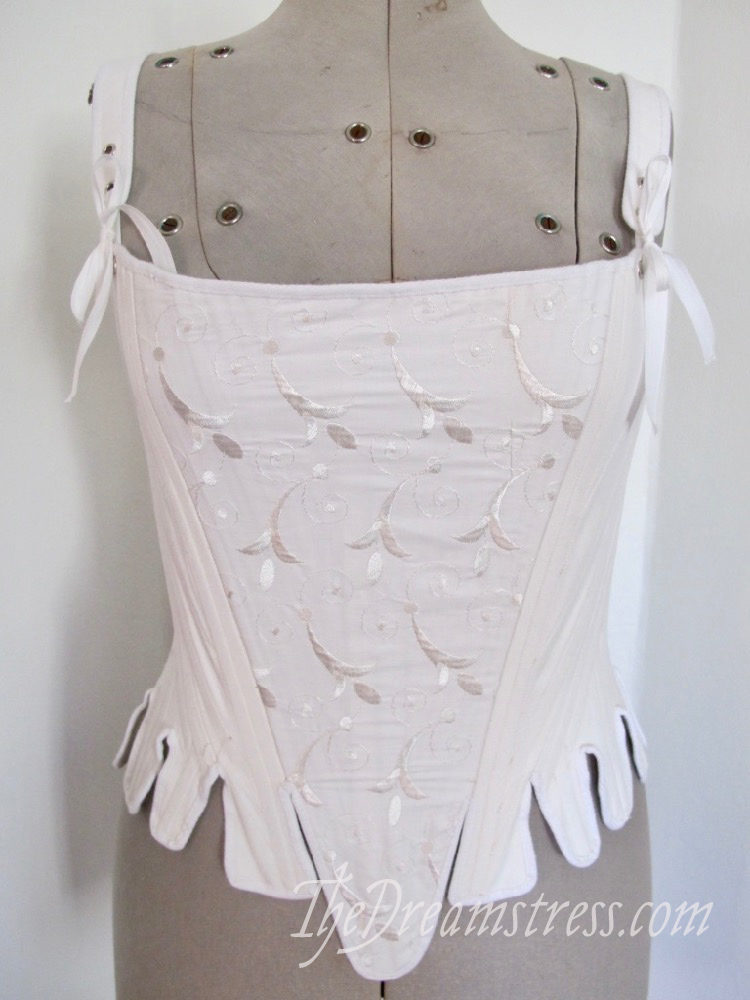

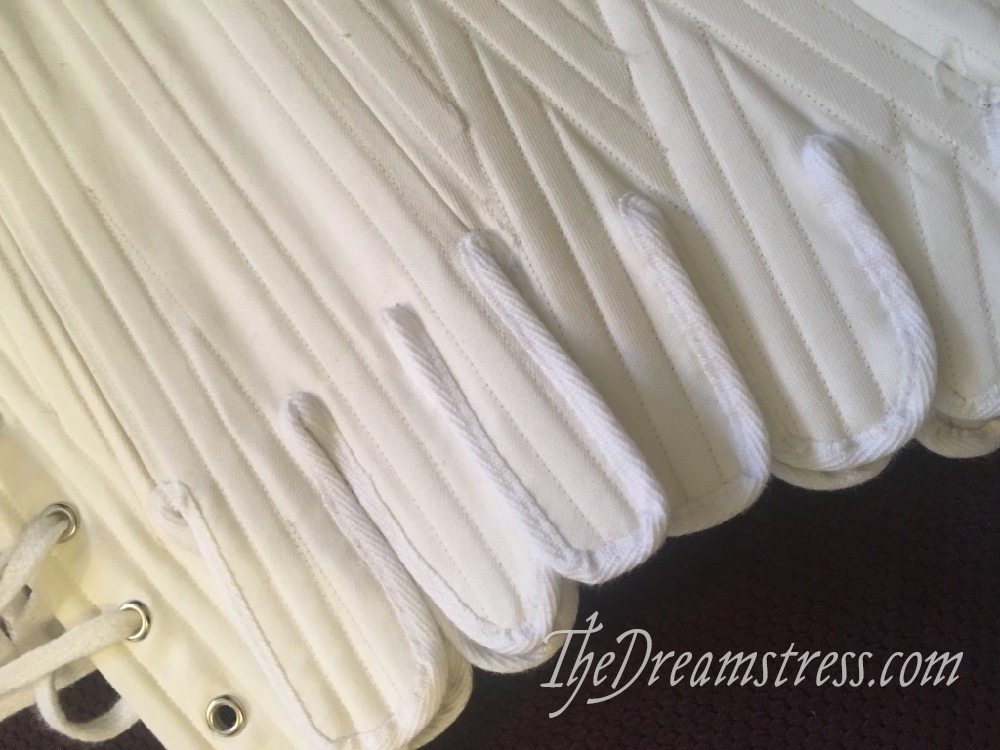
They are beautiful! But, oh, the time! So frustrating. Tell us about ‘your’ industrial machine. Have you learnt to love it? What does it do that a home-sewists machine wouldn’t do? What little vices does it have? I’ve never used an industrial machine. My mother’s Singer treadle had this amazing capacity to cope with different fabrics. She used to say it would sew anything from chiffon to cow-covers!
It’s beautiful!
Singer treadles are wonderful! I have a model from the late 19teens to early 1920s and I love that thing. I do pretty much all my sewing on it.
It really can hammer its way through just a bout any fabric with no problem at all. I was sewing through 12 layers the other day and it complained not a bit.
And according to a sewing machine repairman we talked to. As long as you keep them well oiled, to prevent rust, they are practically indestructible.
They look amazing!
Thank you 🙂
What is it about the x lacing that stresses you out? As someone who loves to reproduce historical clothing in historical ways I also find my ‘day’ job of costuming for theatre to be difficult sometimes, as well. The compromises!
Best,
Quinn
I think the X lacing really stresses me because I feel it deviates from the historical in a way that actually affects the way the stays work (especially as you put them on), and doesn’t makes the stays work better for modern costuming in any measurable way.
When being a stage or screen costumer I’m totally OK with changes that further the narrative of the story, or make the garment work better for the practicalities of the situation, but I don’t like changes that I don’t see helping with either of these. 🙁
In addition to being HA, I think spiral lacing is faster, and takes less cord, so you end up with less of a lump to hide. It does take more skill on the part of the dresser though.
The reason we do cross is that it’s what Weta and the Australian and NZ operas and ballet do for any of their boned bodices – so it makes sense to stick with the precedents of the major local clients. It’s not just local: all the bodices I saw at the SF opera were also cross laced – although my info is over a decade old.
Yes, I’ve never seen a costume for stage that is spiral laced. Hm… Is that partly because, as you mentioned, the dressers would have to learn a new method–whereas with x lacing they already know how from other tasks like tying shoes? I can say that the students I teach are already confused by x lacing on corsets and bodices! I don’t know if spiral lacing would be easier or harder for them!
I’ve never considered that spiral lacing uses less cord… but that’s a good point.
Can you clarify what you mean by how the stays work differently with the different lacing styles as you put them on? I’m curious and not quite sure what you’re referring to.
They came out nice in the end. And the year has nothing on my Regency stays. 😉
How did you solve the fit problems? Conical stays are still unknown territory to me.
Thank you! I’ve got some projects that have taken way more than a year, but the Toi students are expected to finish their stays in 3 weeks, so it feels ridiculous that I, as a teacher, couldn’t do better 🙁
I fixed the waist issue by letting out all the seams a tiny bit at the waist, tapering up to nothing at the bust.
These look lovely! While I agree the cross-lacing causes minor historical-inaccuracy-gripes, the little hand-sewing fear in me really likes the idea of machine stitching all those channels! Wish I could make something like this for myself!
Thank you! <3 Machine sewing does speed it up a bit, that's for sure!